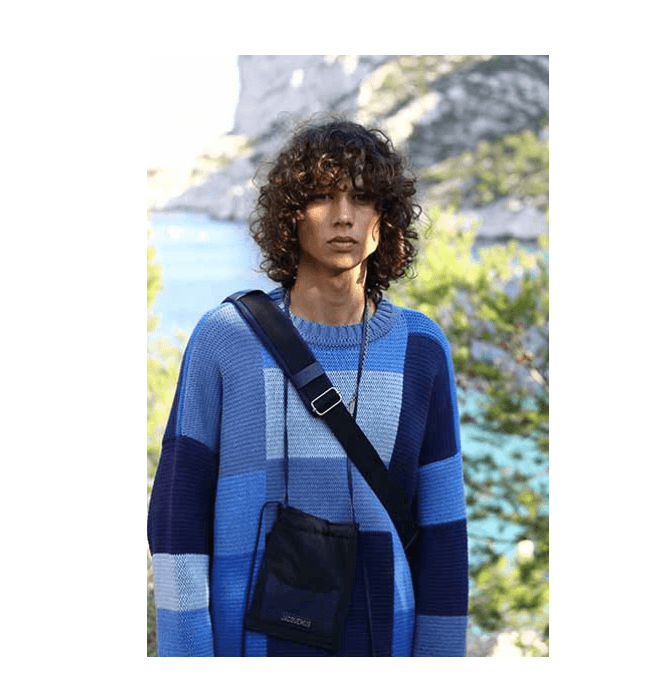Earlier this year, after a few weeks of teasing at the claim of having a “new job,” French designer Simone Porte Jacquemus announced the forthcoming launch of a menswear line. Three months later, the artisan revealed the details of his first menswear collection via instagram with a campaign/editorial shot with a robust model — French union international rugby player Yoann Maestri. The title – “ Les Gadje”— which translates to a name given by men who are not of their world — and the location was set for a popular beach in Marsielle, France — a delightful variation to the buzz of Paris which his audience had gotten used to.
Simone Jacquemus is the designer who has been rumoured to be one of the brightest stars amongst the alliance of new French designers. He has been giving facelifts to the imagery of female fashion and sexuality with the flair and personality of his last few collections. Le Souk, La Bomba, L’Amour D’un Gitan – all previous shows which embodied the liberated, unconstrained spirits of wanderers that were manifested in the forms of a rejuvenated version of the modern day woman. The aura of the brand itself has been described by many as fashion’s breath of fresh air. So when Simone declared the launch of menswear, the assumption by many was that the Jacquemus man would be a parallel personification of the liberal bohemian-like spirit used to inspire its female counterpart.
Only a few days before the launch of his show the designer revealed that the inspiration for menswear in an interview with American Vogue. It was based on the connection that he had built between himself and his now estranged/ex boyfriend Fashion Director Gordon Von Steiner.
“It was more a feeling.. I was obsessed with the way he was dressing. I think Gordon has a particular taste….really simple but particular.”
The day of the show, the designer set the tone. Preview shots of the location on his Instagram, — the shores of the Calanque de Sormiou — a popular beach off the coast of Marsielle, lined with rows of beach towels as the seating arrangement. A few minutes later entered the beautiful bevy of “healthy men,” as he mentioned in his earlier interview with AV. They were not too skinny, not too muscular, just perfect. They were all of diverse complexions.
At first glance, the bright colours and well-casted handsome faces might have fooled one into believing it was a collection worth it’s ballyhoo, but after only a second glimpse, it was evident that these were pieces one could easily acquire at a thrift shop or even at a local Zara franchise. In fact in his interview with AV, he gives insight that the prices for this collection would be lowered, “We wont sell an 800 euros shirts, but one at 270 euros we will.”
For Jacquemus womens’ we were given oversized straw hats, asymmetrically draped skirts, plunging tops, uniquely proportioned low heels — pieces which defined and distinguished his brand in the brimful pool of french designers.
This first menswear collection lacked the dexterity and creativity we knew the designer possessed as a protégé of Rei Kawakubo.The “Jacquemus man” wore cargo shorts, knitted shirts and ties (from his collaboration with Woolmark), printed shirts and speedos. Just like any other man. Apart from the colour coded styling and the branded neck wallets, there was nothing special about this collection. It felt like a bit of a mockery of what he has proven to be naturally capable of.
This was only the designer’s first menswear collection. What’s clear is that the Jacquemus the designer has demonstrated his potential for development and growth, and he’ll surely turn this to his menswear line too.


 PREVIOUS
PREVIOUS

 Twitter
Twitter
 Tumblr
Tumblr
 YouTube
YouTube
 Facebook
Facebook
 Instagram
Instagram
